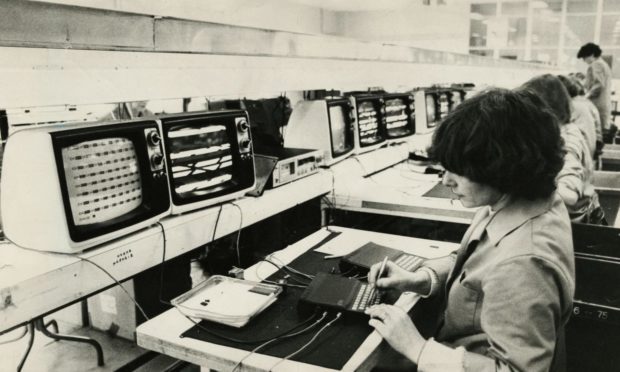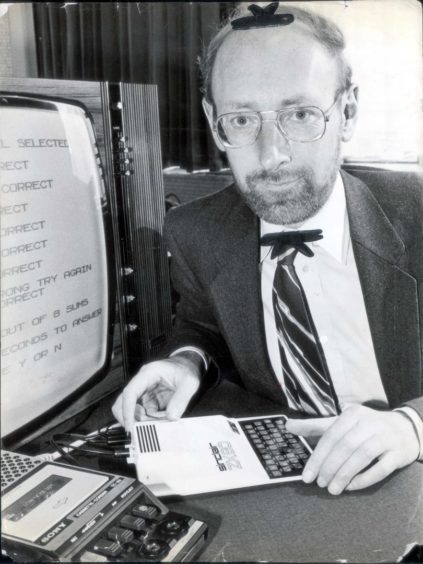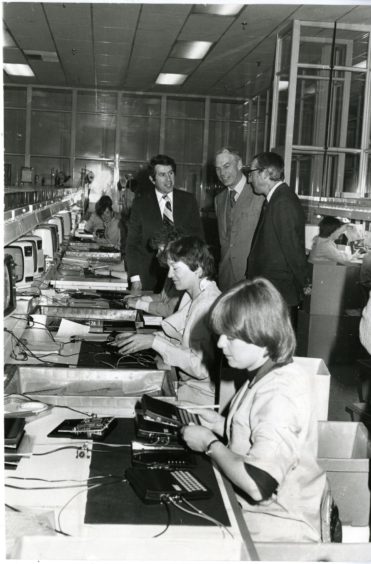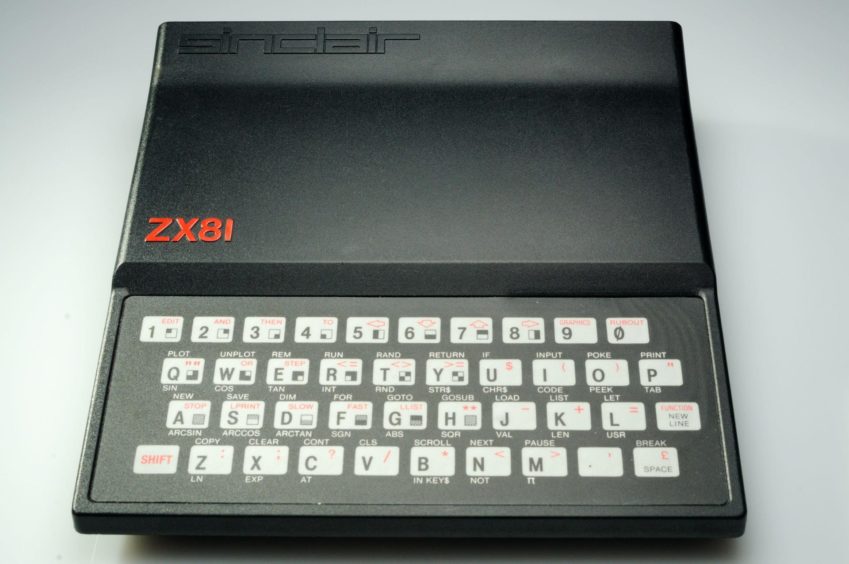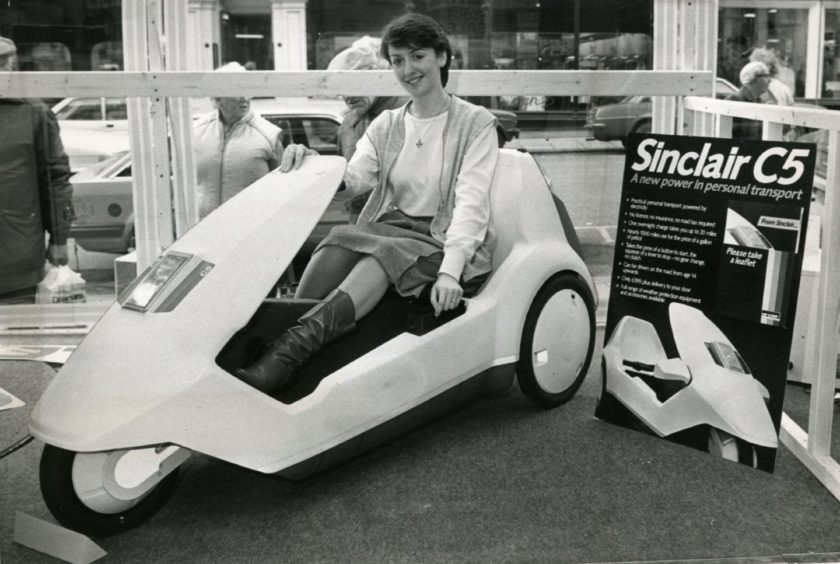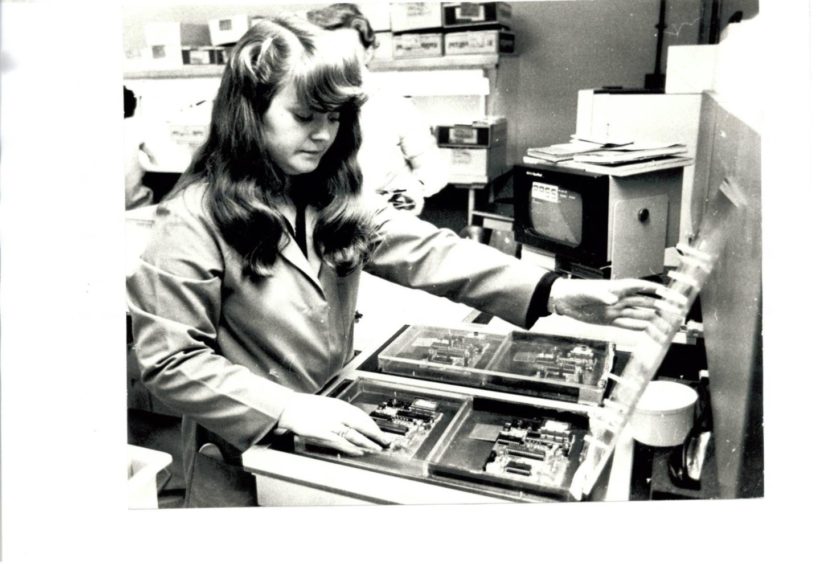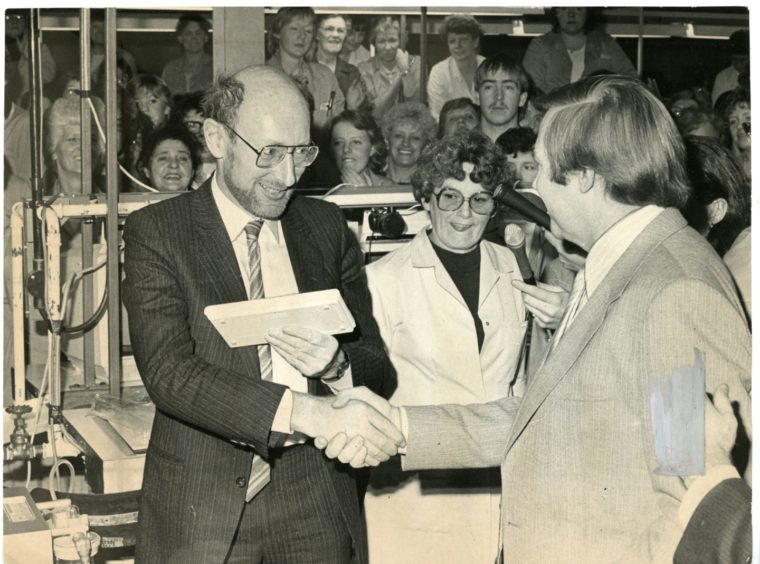Dundee watchmakers started making computers 40 years ago which would spawn the birth of the city’s video games industry.
The ZX81 computer was manufactured at the Timex factory which was the UK’s largest supplier of watches and the city’s single biggest employer with 5,000 workers.
Nimble fingers
It was a workforce which had skilled, nimble fingers which were perfect for watch manufacture and produced generations of the most skilled engineers in the country.
The market for Timex mechanical watches had evaporated and chairman Fred Olsen attempted to find other products to keep the plant going.
There was already some production being carried out at Timex for companies like IBM and more was added in the form of the Nimslo 3D camera.
Mr Olsen persuaded Sir Clive Sinclair to let the Dundee plant handle the assembly of the ZX81 computer which was the successor to the ZX80.
Computer production needed fewer people than watch production but there were hopes the new industry could be a significant employer in Dundee.
Sir Clive had invented pocket radios, pocket TVs and electronic watches before he had a brainwave while watching one of his children play with a Tandy Radio Shack.
He was sure that if a working computer could be made for a reasonable price then there was potentially a mass market for it.
Instant hit
The ZX80 was released in 1980 as a cheap introduction to home computing before the ZX81 was launched in March 1981.
The ZX81 progressed beyond its initial mail-order-only policy and was shipped out from the Timex factory to WH Smith shops for sale at £69.95.
The ZX81 became an instant hit which went on to sell over a million.
Whereas most applications today load almost instantly, programmes and games had to be loaded using a cassette recorder connected to the computer or typed in word for word in the computer language BASIC.
But these were not seen as drawbacks at the time and the two models that followed it – the ZX Spectrum 16k and 48k – captured the public’s imagination and turned home computing into a mass-market hobby.
In Dundee, where they were made, they helped inspire a generation of game makers who would help turn the city into the international hub of game design it has become.
Professor Gregor White, Dean of the School of Design and Informatics at Abertay University said the ZX81 was a first taste of computing for many people who have made a career out of it.
He said: “Timex and the ZX81 played a hugely important role in Dundee’s tech history, and this period marked one of the key moments in the city’s rebirth as an important hub for the UK video games industry.
“So many of Scotland’s games designers will have cut their teeth creating games for machines like the ZX81 or similar early consoles, and the story of these being manufactured in Dundee by a predominantly female workforce is one that is very much to be celebrated.
“Abertay’s success as Europe’s number one institution for video games education can be linked back to the commercial success of innovative products like the ZX81, which sparked a surge in the popularity of gaming and, in turn, generations of programmers, artists and designers.
“The fact that the university is now leading multi-million pound research and development projects, such as InGAME, and is involved in the proposed new Esports arena for Dundee Waterfront, shows just how far the industry has come in the past 40 years at an ever accelerating pace.
“We are proud to have played our part in Dundee’s video games boom to date, and it is very pleasing to be able to look back at milestones like this, and the recent 30th anniversary of the iconic DMA Design game, Lemmings, as we continue to catalogue the impact the industry, and our Abertay graduates, have had.”
Despite competition from higher-powered computers such as the Commodore 64 and the Amstrad, price cuts ensured the Spectrum remained Britain’s most popular model.
Timex in Dundee was now producing a computer every four seconds by February 1983 and games like Football Manager kept them rolling off the production line.
Sinclair C5
In March 1983 Sir Clive sold some of his shares in Sinclair Research to raise £12 million and form a new company, Sinclair Vehicles.
Sir Clive had had an interest in electric vehicles for a long time and wanted to develop his own.
The product was named the Sinclair C5 and the machine was built by a group of engineers and production line workers in a washing machine factory in Merthyr Tydfil.
Sir Clive unveiled the electrically powered pedal car in 1985.
It was a disastrous failure including the contraption’s launch in Dundee where the C5 travelled only a few yards after the drive chain fell off twice.
The huge financial losses from the venture forced Sir Clive to sell the Sinclair name and the rights to his computers to Sir Alan Sugar’s Amstrad for £5m in 1986.
It signalled the end of Spectrum manufacturing in Dundee as Amstrad moved production to Taiwan before the line was discontinued in 1992, no longer able to compete with most powerful computers and consoles on the market.
Cheaper labour costs overseas put the Dundee plant under pressure, and after a lengthy industrial dispute Timex closed the Camperdown Works in 1993, ending the company’s 47-year association with the city.
The final months will be remembered as one of Scotland’s last great workers’ strikes – but the resulting hundreds of job losses had a devastating impact on the city.
A history of Timex in Dundee
December 23 1946: The UK Time Company (a division of the US Time Corporation) opens in temporary premises at Dryburgh Farm House near the factory still being built at Camperdown in Dundee.
1947: The Camperdown factory opens in Harrison Road.
1981 Sinclair Research Limited announces it has sub-contracted Timex in Dundee to mass produce its new ZX81 computer and printer – plus the tubes for its new flat screen pocket TV.
1982: IBM starts to sub-contract work to Timex in Dundee.
1982: Timex starts assembling the new Sinclair computer ZX 82, lovingly called the ZX Spectrum.
January 1983: Timex management announces 1,900 redundancies – due not only to the loss of the Nimslo contract but also to the cessation of all traditional watchmaking activity in Dundee, which will involve the closure of most of the Milton of Craigie and Dunsinane Avenue factories.
February 1983: Sinclair Research says it has become the first company in the world to sell a million home computers.
December 1983: As demand for Sinclair computers in the pre-Christmas rush starts to vastly outstrip production, Clive Sinclair attends a ceremony at Camperdown to mark the production of the one millionth Spectrum micro-computer.
August 1985: Robert Maxwell withdraws his rescue bid for Sinclair Research.
1986: Amstrad buys the rights to sell and manufacture Sinclair Research products.
January 1993: A mass meeting in the canteen at Camperdown votes in favour of industrial action. The strike starts and is officially sanctioned by the executive council of the AEEU.
May 1993: There is a May Day march to Dundee City Square. Sacked workers speak at May Day rallies throughout Scotland.
May 1993: By now, 16 of the original 17 non-strikers have restarted work at the factory. However, none of the other 326 sacked workers have crossed the picket line. The regular Monday morning mass demonstration at the factory gates is noisy but incident-free.
June 15 1993: Early in the morning, Timex executives take the decision to close the Camperdown factory by Christmas. Muhammad Saleh announces this to local union officials and that TEC management have offered to negotiate an ex-gratia payment to the sacked workers to come back for the run-down on the same terms as the replacement workforce.
June 17 1993: With two exceptions, a meeting of sacked workers rejects the management offer of temporary work.
August 29 1993: Having stripped the factory of all its contents, the Timex management pays off all its remaining hourly-paid workers and closes the Camperdown factory at 6pm.
